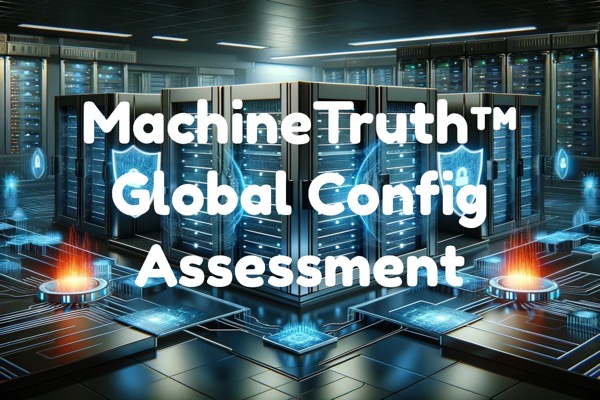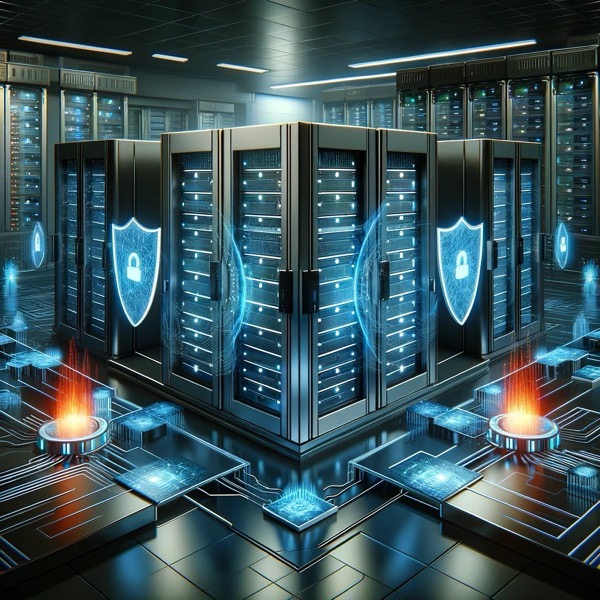Recently, Brent Huston, our CEO and Security Evangelist, was interviewed about MachineTruth™ Global Configuration Assessments and the platform in general. Here is part of that interview:
Q1: Could you explain what MachineTruth Global Configuration Assessments are and their importance in cybersecurity?
Brent: MachineTruth Global Configuration Assessments are part of a broader approach to enhancing cybersecurity through in-depth analysis and management of network configurations. They involve the passive, zero-deployment offline analysis of configuration files to model logical network architectures, changes, segmentation options, and trust/authentication patterns and provide hardening guidance. This process is crucial for identifying vulnerabilities within a network’s configuration that could be exploited by cyber threats, thus playing a pivotal role in strengthening an organization’s overall security posture.
Q2: How does the MachineTruth approach differ from traditional network security assessments?
Brent: MachineTruth takes a unique approach by focusing on passive analysis, meaning it doesn’t interfere with the network’s normal operations or pose additional risks during the assessment. Unlike traditional assessments that may require active scanning and potentially disrupt network activities, MachineTruth leverages existing configuration files and network data, minimizing operational disruptions. This methodology allows for a comprehensive understanding of the network’s current state without introducing the potential for network issues during the assessment process.
It also allows us to perform holistic assessments and mitigations across networks that can be as large as global in scale. You can ensure that standards, vulnerability mitigations, and misconfiguration issues are managed on every relevant device and application across the network, cloud infrastructure, and other exposures simultaneously. Since you get back reporting that includes root cause analysis, your executive and management team can use that data to fund projects, purchase tools, or increase vigilance. The technical details have identified issues and detailed mitigations for every single issue, allowing you to rapidly prioritize, distribute, and mitigate any shortcomings in the environment. Overall, clients find it a uniquely powerful tool to harden their security posture, regardless of the size and complexity of their network architectures.
Q3: In what way do Global Configuration Assessments contribute to an organization’s risk management efforts?
Brent: Global Configuration Assessments contribute significantly to risk management by providing detailed insights into the network’s configuration and architecture. This information enables organizations to identify misconfigurations, unnecessary services, and other vulnerabilities that could be leveraged by attackers. By addressing these issues, organizations can reduce their attack surface and mitigate risks associated with cyber threats, enhancing their overall risk management strategy.
Q4: Can MachineTruth Global Configuration Assessments be integrated into an existing security framework or compliance requirements?
Brent: MachineTruth Global Configuration Assessments can seamlessly integrate into security frameworks and compliance requirements such as ISO 27001, PCI DSS, NERC CIP, HIPAA, CIS CSC, etc. The insights and recommendations derived from these assessments can support compliance with various standards and regulations by ensuring that network configurations align with best practices for data protection and cybersecurity. This integration not only helps organizations maintain compliance but also strengthens their security measures in alignment with industry standards.
Q5: What is the future direction for MachineTruth in the evolving cybersecurity landscape?
Brent: The future direction for MachineTruth in the cybersecurity landscape involves continuous innovation and adaptation to address emerging threats and technological advancements. As networks become more complex and cyber threats more sophisticated, MachineTruth will evolve to offer more advanced analytics, AI-driven insights, and integration with cutting-edge security technologies. This ongoing development will ensure that MachineTruth remains at the forefront of cybersecurity, providing organizations with the tools they need to protect their networks in an ever-changing digital environment. MachineTruth has been in constant development and leveraged to perform security services for more than six years to date, and we feel confident that we are just getting started!
To learn more about MachineTruth, configuration assessments or the various compliance capabilities of MSI, just drop us a line to info@microsolved.com. We look forward to working with you!



